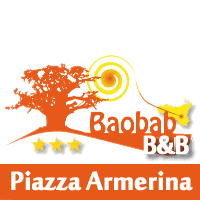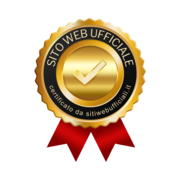Home - In and around
Regional Archaeological Museum in Lentini at Museumstrasse 1, Lentini Siracusa province.
The museum dates back to the fifties; Originally designed as a school building, it was acquired by the Superintendent of Antiquities for Eastern Sicily, to allow the creation of a museum intended to illustrate the first great discoveries on the site of Leontinoi.
The museum illustrates the history of Leontinoi and its territory from prehistory to the Middle Ages, through the exhibition of materials from the ancient city and the main sites
the archaeological area.
Leontinoi, calcidese colony was founded in 729 BC, on the edge of a thickly territory covered by indigenous settlements. The city occupied two parallel heights, with the interposed valley, overlooking the fertile plain of Catania and connected to the sea through the river S. Leonardo.
A wall enclosing the city running along the edge of the hills and also including the valley, the ends of which were located two heavy doors pincer. Of the latter, the southern one has been fully brought to light along with a few traces of urban sacred areas (on top of the hills), an extra-urban sanctuary (in plain Alaimo district) and part of the necropolis which extended to north bow and south of the city.
The territory of Lentini also returned testimonies about human occupation from the Neolithic. Particularly significant in the context of the prehistory of south-eastern Sicily, are the settlements, only partly explored, the Valsavoia (final phase of the Early Bronze Age, facies of Rhodes-Tindari-Vallelunga) and Metapiccola (XI-IX century BC., type ausonio) culture.
The collections. The first nucleus comes from the ancient Civic Museum, fully merged in the current museum, and is constituted by a complex of materials of various origins, mostly of uncertain contextualization.
A large part comes from the excavations carried out in the fifties in the valley S. Mauro, in correspondence of the southern city gate and one of the cemeteries and on the Metapiccola glues, as part of the settlement of the Iron Age indigenous; the last part, finally, relates to investigations and made discoveries in recent years by the Superintendence of Cultural Heritage of Syracuse in the territory and in the urban site of the present town.
The order is chronological and topographical together; from the most ancient of human presence in the territory during the prehistory claims, it is passed to the colonization and the subsequent illustration of the Greek city (inhabited, fortifications, burial grounds, temple architecture); Finally, we expose the data acquired to date regarding the history of the city center and the territory during the late Roman, Byzantine, Arab and medieval. The exposure of the material is supported by appropriate teaching aids in the understanding of various issues and for the reconstruction of the stages of research.
Room 1 Introduction to the territory geomorphological - The Quaternary
Room 2 Prehistory
Room 3 indigenous settlements between the ninth and eighth centuries. B.C.
Room 4 The Greek city: the town
Room 5 The Greek city: fortifications and shrines
Room 6 The cemeteries
Room 7 late Roman Age, Byzantine and medieval; divers materials; numismatics.
source Regional cultural heritage site
REGIONAL ARCHAEOLOGICAL MUSEUM IN SYRACUSE LENTINI
Regional Archaeological Museum in Lentini at Museumstrasse 1, Lentini Siracusa province.
The museum dates back to the fifties; Originally designed as a school building, it was acquired by the Superintendent of Antiquities for Eastern Sicily, to allow the creation of a museum intended to illustrate the first great discoveries on the site of Leontinoi.
The museum illustrates the history of Leontinoi and its territory from prehistory to the Middle Ages, through the exhibition of materials from the ancient city and the main sites
the archaeological area.
Leontinoi, calcidese colony was founded in 729 BC, on the edge of a thickly territory covered by indigenous settlements. The city occupied two parallel heights, with the interposed valley, overlooking the fertile plain of Catania and connected to the sea through the river S. Leonardo.
A wall enclosing the city running along the edge of the hills and also including the valley, the ends of which were located two heavy doors pincer. Of the latter, the southern one has been fully brought to light along with a few traces of urban sacred areas (on top of the hills), an extra-urban sanctuary (in plain Alaimo district) and part of the necropolis which extended to north bow and south of the city.
The territory of Lentini also returned testimonies about human occupation from the Neolithic. Particularly significant in the context of the prehistory of south-eastern Sicily, are the settlements, only partly explored, the Valsavoia (final phase of the Early Bronze Age, facies of Rhodes-Tindari-Vallelunga) and Metapiccola (XI-IX century BC., type ausonio) culture.
The collections. The first nucleus comes from the ancient Civic Museum, fully merged in the current museum, and is constituted by a complex of materials of various origins, mostly of uncertain contextualization.
A large part comes from the excavations carried out in the fifties in the valley S. Mauro, in correspondence of the southern city gate and one of the cemeteries and on the Metapiccola glues, as part of the settlement of the Iron Age indigenous; the last part, finally, relates to investigations and made discoveries in recent years by the Superintendence of Cultural Heritage of Syracuse in the territory and in the urban site of the present town.
The order is chronological and topographical together; from the most ancient of human presence in the territory during the prehistory claims, it is passed to the colonization and the subsequent illustration of the Greek city (inhabited, fortifications, burial grounds, temple architecture); Finally, we expose the data acquired to date regarding the history of the city center and the territory during the late Roman, Byzantine, Arab and medieval. The exposure of the material is supported by appropriate teaching aids in the understanding of various issues and for the reconstruction of the stages of research.
Room 1 Introduction to the territory geomorphological - The Quaternary
Room 2 Prehistory
Room 3 indigenous settlements between the ninth and eighth centuries. B.C.
Room 4 The Greek city: the town
Room 5 The Greek city: fortifications and shrines
Room 6 The cemeteries
Room 7 late Roman Age, Byzantine and medieval; divers materials; numismatics.
source Regional cultural heritage site



